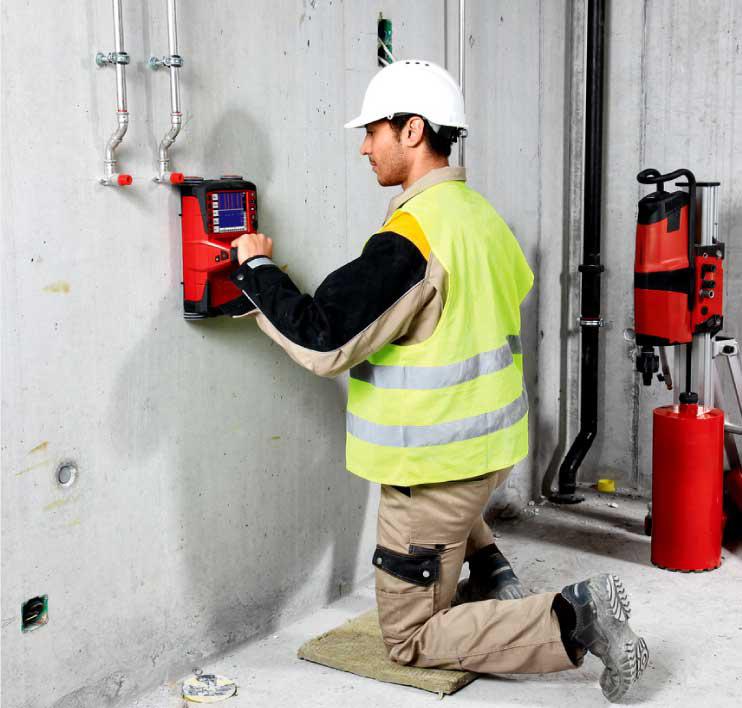The Ultimate RainierGPR Concrete Scanning Service Described
Wiki Article
Exploring the Midst: A Comprehensive Guide to Concrete Scanning and Its Diverse Applications
In the realm of construction and facilities advancement, the thorough process of concrete scanning holds a critical function in making certain the architectural integrity and safety of projects. As technology proceeds to progress, the applications of concrete scanning have actually broadened far past simple surface-level analyses.Relevance of Concrete Scanning
Understanding the importance of concrete scanning is crucial in ensuring the safety and stability of structures during construction and restoration tasks. Concrete scanning utilizes sophisticated technologies such as ground-penetrating radar (GPR) and electro-magnetic induction to identify embedded objects, spaces, or various other anomalies within concrete structures.In addition, concrete scanning plays a crucial function in guaranteeing conformity with building regulations and regulations that mandate the defense of existing architectural parts during building tasks. By properly mapping out the inner composition of concrete, scanning innovations allow building specialists to make educated choices that support the architectural security and longevity of structures and infrastructure jobs. Fundamentally, the value of concrete scanning depends on its capability to guard both the architectural stability and the personnel associated with construction endeavors.
Technologies Used in Concrete Scanning
Concrete scanning depends on innovative technologies such as ground-penetrating radar (GPR) and electro-magnetic induction to precisely find embedded things and anomalies within concrete frameworks. Ground-penetrating radar operates by discharging high-frequency electromagnetic waves right into the concrete. When these waves run into various products or gaps within the concrete, they get better to the surface, permitting the GPR system to produce a detailed subsurface image. This modern technology is especially reliable in finding rebar, post-tension cables, conduits, and various other items embedded in concrete.Electro-magnetic induction, on the various other hand, functions by producing electromagnetic fields around a concrete structure via a transmitter coil. When steel things are existing within the concrete, they disrupt these magnetic fields, causing eddy currents to stream via the steel. By gauging the adjustments in the magnetic fields with a receiver coil, the system can pinpoint the place of metallic objects in the concrete.
These sophisticated modern technologies play an essential function in non-destructive screening, ensuring the safety and stability of concrete frameworks in numerous industries.
Applications in Building Market
Within the building and construction industry, concrete scanning innovation locates varied applications that boost job efficiency and safety and security. In addition, concrete scanning is made use of for finding spaces, such as air pockets or areas of deterioration within concrete, which can compromise the total stamina of a structure. Concrete scanning plays a crucial function in top quality control by confirming the thickness of concrete covers over support, making sure compliance with design requirements and requirements.
Safety And Security Benefits of Concrete Scanning
In the realm of building and construction safety and security, the application of concrete scanning innovation provides a vital benefit in preemptively identifying prospective risks and fortifying architectural stability. By using advanced scanning methods such as ground-penetrating radar (GPR) and electromagnetic induction, construction groups can properly locate rebar, post-tension wires, channels, and other hidden things within concrete structures. This aggressive technique substantially decreases the risk of unexpected strikes during exploration, reducing, or coring tasks, thereby protecting against expensive problems, injuries, and task hold-ups.Moreover, concrete scanning improves worker security by offering real-time details regarding the architectural condition of concrete aspects. By attending to possible security issues promptly, concrete i thought about this scanning adds to creating a secure functioning environment and reducing the probability of architectural failings or crashes on building and construction websites.
Future Trends in Concrete Scanning
Emerging improvements in scanning modern technology are positioned to revolutionize the area of concrete assessment and analysis. One significant trend that is obtaining traction is the integration of fabricated intelligence (AI) and equipment learning formulas right into concrete scanning gadgets. By taking advantage of the power of AI, these systems can analyze huge amounts of information collected throughout scanning processes to offer even more accurate and comprehensive understandings into the problem of concrete frameworks. This can aid in detecting concealed flaws, anticipating potential architectural failings, and even recommending upkeep methods.One more significant trend is the development of more user-friendly and portable scanning devices. Miniaturization of scanning equipment enables for simpler access to constrained spaces and remote areas, making inspections extra efficient and extensive. In addition, advancements in cordless communication technologies enable real-time data transfer and evaluation, assisting in quicker decision-making processes.
In addition, there is an expanding concentrate on sustainability in concrete scanning modern technologies - RainierGPR Concrete Scanning. Suppliers are significantly integrating green materials and energy-efficient attributes into their tools to minimize environmental influence. These future fads are readied to boost the performance, precision, and sustainability of concrete scanning techniques, forming the industry's future landscape
Final Thought
In conclusion, concrete scanning plays a critical function in the construction industry by guaranteeing the safety and performance of numerous jobs. As modern technology advancements, the future of concrete scanning holds encouraging developments for boosting construction processes.

Report this wiki page